Comments / Questions (299)
![]() Rita Tams wrote:
Rita Tams wrote:
Forstår ikke på højre forstykke tages der 4 m ind over den yderste snoning mod midt for. Skal der strikkes 2 vrang sammen før og efter snoningen og skal de 4 m i snoningen også strikkes sammen 2 og 2. Med venlig hilsen Rita
13.10.2015 - 11:37DROPS Design answered:
Hej Rita, Ja det stemmer så du i alt tager 4 m ind ved at strikke dem sammen 2 og 2. God fornøjelse!
16.10.2015 - 15:48
![]() Maria wrote:
Maria wrote:
Ich stricke gerade das rechte Vorderteil und habe Probleme bei den Abnahmen im Schulterbereich. Da steht ich soll die Maschen vor, über und nach dem Zopf abnehmen. Wenn ich das tue zerstöre ich das Muster, oder? Sollte ich vor, über und nach dem kleinen Zopf (2x2 MAschen verkreuzen) neben der Knopfleiste abnehmen? Ich freue mich auf eine Antwort
09.10.2015 - 13:11DROPS Design answered:
Sie machen die Abnahmen an dem Zopf, der direkt am Halsrand liegt, also am Zopf neben der Knopfleiste, genau. Eine Abnahme vor der Verzopfung, eine Abnahme nach der Verzopfung und 2 M bei den Zopf-M. Diese M werden ja anschließend stillgelegt, daher ist es nicht relevant, dass Sie das Muster "zerstören". Es ist nötig, damit der Halsrand nicht zu locker wird.
13.10.2015 - 17:24
![]() Amanda wrote:
Amanda wrote:
I was able to see the charts finally, but I had to use an android device. My safari still won't display the charts. But I have another question, when working the second row of the charts, the WS row, do I repeat the order and work M1, M2, purl 14, M3, M1 in that order? Or do I work it backwards with the WS M1, M3, purl 14, M2, M1, and so forth.
20.08.2015 - 20:05DROPS Design answered:
Dear Amanda, it may be a matter of settings in your safari (it works on mine). When working from RS as follows: M.1, M.2, P 14 sts, M.3, M.1, work from WS as follows: M.1, M.3, P14, M.2, M.1 - read more about diagrams here. Happy knitting!
21.08.2015 - 09:07
![]() Amanda wrote:
Amanda wrote:
I am in the middle of this pattern and am at the point where I need to start working on the M.2 and M.3 diagrams.. But suddenly the diagrams are not viewable in the pattern directions anymore. Under the diagram heading there are no charts, only a Twitter symbol. There were charts there a few days ago. But the disappeared. There has to be a glitch in the web code. Can you please email me the charts for M.2 and M.3? Thanks.
20.08.2015 - 18:10DROPS Design answered:
Dear Amanda, diagrams should be there, just above the measurement chart - refresh the page may be helpful. Happy knitting!
20.08.2015 - 18:26
![]() Maria wrote:
Maria wrote:
Ich verstehe leider nicht, wie man die Maschen für den Ärmel aufnehmen soll. 4 M. 2-2-3 (3-3) Mal, 8 M. 1-1-1 (1-3) Mal, 10 M. 1-1-1 (2-1) Mal und 12-14-15 (15-16) M. 1 Mal = 144-154-172 (196-218) M. Ich stricke die 2. angegebene größe. Soll ich 2mal 4 Maschen, 1mal 8 Maschen,1mal 10 Maschen und 1mal 14 Maschen anschlagen? (insgesamt 40 Mx2?) Warum ist es so kompliziert angegeben? Welchen Sinn hat es?
16.08.2015 - 18:03DROPS Design answered:
Das ist die einfachste und ganz übliche Methode, um alle Größen auf einen Blick unterzubekommen. Sie orientieren sich immer an der 2. Zahl. Die Zunahmen gelten für das Ende jeder R, Sie müssen dabei beachten, die Zunahmen beidseitig zu machen. Also: Am Ende der Hin-R 4 M + am Ende der Rück-R 4 M, dann nochmals am Ende der Hin-R + am Ende der Rück-R je 4 M (= 4 M 2 x), dann am Ende der nächsten Hin-R und am Ende der nächsten Rück-R je 8 M (= 8 M 1 x) usw. Sie haben dann beidseitig je 40 M zugenommen, wie Sie geschrieben haben.
16.08.2015 - 18:22Illi wrote:
Ho ancora una domanda: come faccio le diminuzione di 7 maglie sulle trecce di M3? Lavoro per 6 volte 2 maglie assieme nella treccia grande in mezzo e 1 volta 2 maglie assieme nella treccia piccola laterale (totale 7 maglie)? Inoltre non capisco il senso di mettere le maglie in attesa... Grazie per i chiarimenti :)
29.07.2015 - 12:11DROPS Design answered:
Buongiorno Illi. Per diminuire le m potrebbe p.es lavorare insieme la seconda e la terza m di ogni treccia piccola, la seconda e la terza m delle m lavorata a maglia rasata rovescia, e la terza e la quarta m, e la terzultima e la quartultima m della treccia grande. Le m messe in attesa verranno riprese in un secondo momento per il cappuccio. Buon lavoro!
30.07.2015 - 13:46Illi wrote:
Capito! Grazie per la spiegazione, molto chiara. :)
23.07.2015 - 09:39Illi wrote:
Capito! Grazie per la spiegazione, molto chiara. :)
21.07.2015 - 21:56Illi wrote:
Ho notato che nel mio lavoro le due doppie trecce sono convergenti mentre nella foto del modello sono divergenti, eppure ho seguito il diagramma: la doppia treccia si forma mettendo prima le tre maglie DAVANTI il lavoro e dopo tre maglie DIETRO il lavoro... oppure ho sbagliato qualcosa? Grazie per il vostro aiuto.
21.07.2015 - 12:12DROPS Design answered:
Buongiorno Illi. I diagrammi si leggono dal basso verso l'alto e da destra verso sinistra. In questo modo mette le tre maglie prima sul dietro del lavoro e poi sul davanti, così la treccia risulta come nella fotografia. Ci riscriva se non è chiaro. Buon lavoro!
21.07.2015 - 19:29Illi wrote:
Ho cominciato la parte davanti del lavoro interpretando il diagramma M2 e M3 in questo modo: il 5º e 6º ferro della parte centrale li ho lavorati prima di proseguire con il 4º ferro, cioè le dodici maglie centrali ripetute indietro e poi di nuovo avanti per tornare al punto dove poter proseguire con il 4º ferro. Ottengo in questo modo un risultato diverso da quello da voi proposto?
21.07.2015 - 12:07DROPS Design answered:
Buongiorno Illi. I diag.M.2 e M.3 vengono lavorati come segue: le trecce laterali si lavorano su quattro righe; quella centrale su 6. Quindi, dopo le prime 4 righe, per le trecce laterali riprende dalla prima riga, per quella centrale continua con la quinta e la sesta riga. I diagrammi si leggono dal basso verso l'alto e da destra verso sinistra. Ci riscriva se non è chiaro. Buon lavoro!
21.07.2015 - 19:28
Snuggly Bunny#snugglybunnybuntingbag |
|||||||||||||||||||
 |
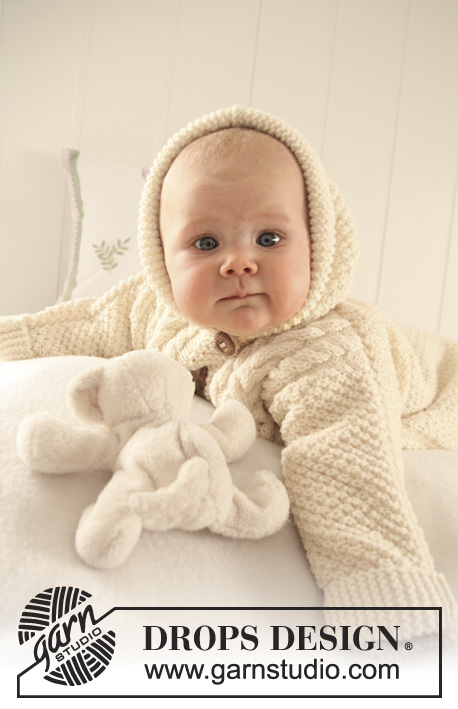 |
||||||||||||||||||
Knitted bunting bag in moss st with textured pattern and cables in DROPS Merino Extra Fine
DROPS Baby 19-10 |
|||||||||||||||||||
|
BUNTING BAG: GARTER ST (back and forth on needle): K all rows. PATTERN: See diagram M.1 to M.3. Diagrams show the pattern from RS. First row in M.2 and M.3 = RS. HOLE FOR SEAT BELT IN CAR SEAT: You can make a hole on front and back piece for car seat belt. Make the hole when piece measures approx 16-20-23 (28-33) cm (or required measurements) by casting off the middle 10 sts on needle. On next row cast on 10 new sts over cast off sts and continue as before. BUTTONHOLES: Make buttonholes on right front band. 1 buttonhole = K tog 2nd and 3rd st from mid front and make 1 YO. Make buttonholes when piece measures: Size 1/3 months: 25, 30, 35, 40, 45 and 50 cm. Size 6/9 months: 28, 34, 41, 47, 54 and 60 cm. Size 12/18 months: 30, 38, 46, 54, 62 and 70 cm. Size 2 years: 37, 44, 51, 58, 65, 72 and 79 cm. Size 3/4 years: 40, 48, 57, 65, 74, 82 and 91 cm. -------------------------------------------------------- -------------------------------------------------------- BUNTING BAG: The bag is worked in 2 parts from bottom edge and up and sewn tog afterwards. Work each part back and forth on circular needle in order to fit in all sts. NOTE: If hole for seat belt is required – see above. BACK PIECE: Cast on 68-74-82 (86-94) sts (includes 1 edge st each side) on circular needle size 4 mm with Merino Extra Fine. Work GARTER ST - see above – for 4-4-4 (5-5) cm – adjust to a row from WS. P 1 row from WS and continue in M.1 with 1 edge st in garter st each side (beg with K1 after edge st). When piece measures 44-53-62 (71-82) cm cast on new sts for sleeves each side. Cast on at the end of every row as follows: 4 sts 2-2-3 (3-3) times, 8 sts 1-1-1 (1-3) times, 10 sts 1-1-1 (2-1) times and 12-14-15 (15-16) sts 1 time = 144-154-172 (196-218) sts on needle – NOTE: incorporate inc sts in M.1 as you go along - when all sts have been cast on continue M.1, but with 10 sts each side in garter st (= bottom edge of sleeves). When piece measures 54-64-74 (84-96) cm cast off the middle 16-18-22 (24-24) sts for neck and complete each shoulder/sleeve separately. Cast off 1 st on neckline on next row = 63-67-74 (85-96) sts left on needle (= shoulder + sleeve). Cast off when piece measures 56-66-76 (86-98) cm. Repeat on the other side. FRONT PIECE: Cast on 68-74-82 (86-94) sts and work garter st for 2-2-2 (2.5-2.5) cm, then work next row as follows from RS: K 12-13-14 (14-16) sts, * K2 tog, 1 YO, K 12-13-15 (12-13) sts *, repeat from *-* a total of 3-3-3 (4-4) times, K2 tog, 1 YO and finish with K 12-14-15 (14-16) sts (= 4-4-4 (5-5) buttonholes). Continue in garter st until edge measures 4-4-4 (5-5) cm - adjust to a row from WS. P 1 row from WS, AT THE SAME TIME inc 22 sts evenly = 90-96-104 (108-116) sts. Work next rows as follows from RS: 1 edge st, M.1 on the first 5-8-12 (14-18) sts (beg with K1 at the side to match pattern at the side to back piece), M.2 (= 32 sts), P 14 sts, M.3 (= 32 sts), M.1 on the next 5-8-12 (14-18) sts (adjust so M.1 finishes with P1 at the side before edge st to match pattern to back piece) and finish with 1 edge st. Continue in pattern like this with M.1, M.2 and M.3 and 14 sts in reverse stocking st mid front. When piece measures 23-25-28 (33-37) cm slip the first 42-45-49 (51-55) sts on a stitch holder = 48-51-55 (57-61) sts left on needle. RIGHT FRONT PIECE: = 48-51-55 (57-61) sts. Continue in pattern as before, but work the 6 sts towards mid front in garter st for front band - REMEMBER BUTTONHOLES - see above! When piece measures 44-53-62 (71-82) cm cast on new sts for sleeve at the end of every row towards the side as described for back piece = 86-91-100 (112-123) sts. When all sts have been cast on continue in pattern as before, but work the 10 sts on sleeve edge in garter st. When 1 row remain before piece measures 51-61-71 (80-92) cm – adjust so this row is from WS - dec 4 sts on the cable towards mid front (i.e. dec 2 sts over cable and 1 st each side of cable). On next row from RS slip 6-7-8 (9-9) sts towards mid front on a stitch holder for neck. Cast off to shape the neckline at the beg of every row from mid front: 2 sts 2 times and 1 st 2-2-3 (3-3) times = 70-74-81 (92-103) sts left on needle (= shoulder + sleeve). Continue in pattern as before. When 1 row remain before piece measures 56-66-76 (86-98) cm dec 7 sts evenly over sts in cables in M.3 = 63-67-74 (85-96) sts. On next row cast off all sts. LEFT FRONT PIECE: Slip sts from stitch holder back on needle and pick up 6 sts behind the 6 garter sts on right front band = 48-51-55 (57-61) sts. Continue as described for right front piece but mirrored – NOTE: do not make buttonholes on front band. ASSEMBLY: Sew shoulder/over arm seams. Sew seam under sleeves and down along the side inside 1 edge st. Fold 5 cm on each sleeve edge towards RS and fasten with a couple of sts. Sew 4-4-4 (5-5) buttons at bottom of bunting bag and sew remaining buttons on left front band. HOOD: Pick up from RS approx 58 to 78 sts round neck (includes sts from stitch holders at front) on circular needle size 4 mm with Merino Extra Fine. K 1 row from WS, then K 1 row from RS, AT THE SAME TIME inc evenly to 85-89-93 (97-101) sts. Continue in M.1 with 6 garter sts each side - AT THE SAME TIME cast on 6 new sts at the end of the next 2 rows for folding edge = 97-101-105 (109-113) sts – work these sts in garter st. Continue in M.1 with 12 garter sts each side until hood measures 21-23-25 (27-28) cm and cast off. Fold hood double and sew tog at the top. Fold 6 garter sts round opening of hood towards RS and fasten to neckline with neat sts. |
|||||||||||||||||||
Diagram explanations |
|||||||||||||||||||
|
|||||||||||||||||||
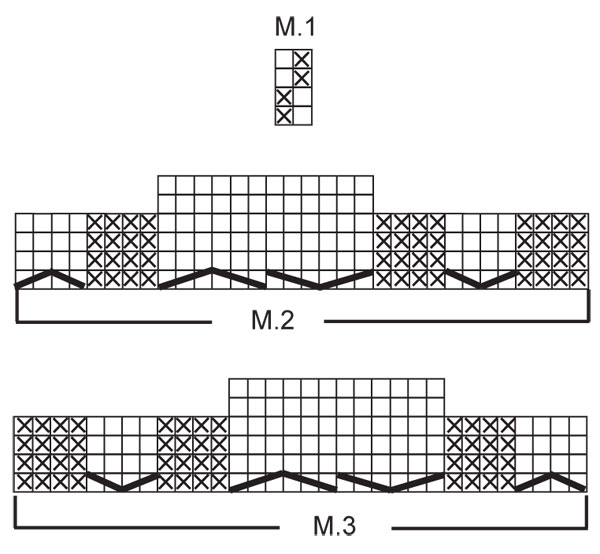 |
|||||||||||||||||||
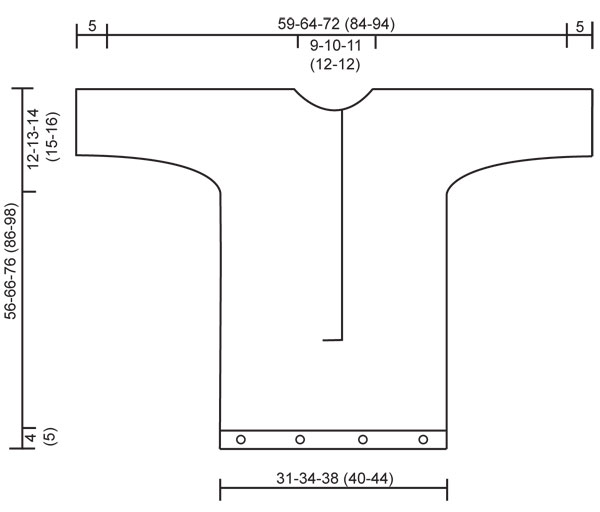 |
|||||||||||||||||||
Have you finished this pattern?Tag your pictures with #dropspattern #snugglybunnybuntingbag or submit them to the #dropsfan gallery. Do you need help with this pattern?You'll find 19 tutorial videos, a Comments/Questions area and more by visiting the pattern on garnstudio.com. © 1982-2025 DROPS Design A/S. We reserve all rights. This document, including all its sub-sections, has copyrights. Read more about what you can do with our patterns at the bottom of each pattern on our site. |
|||||||||||||||||||








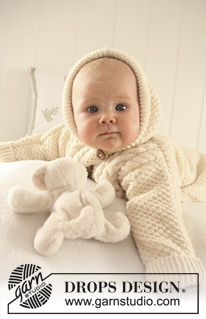





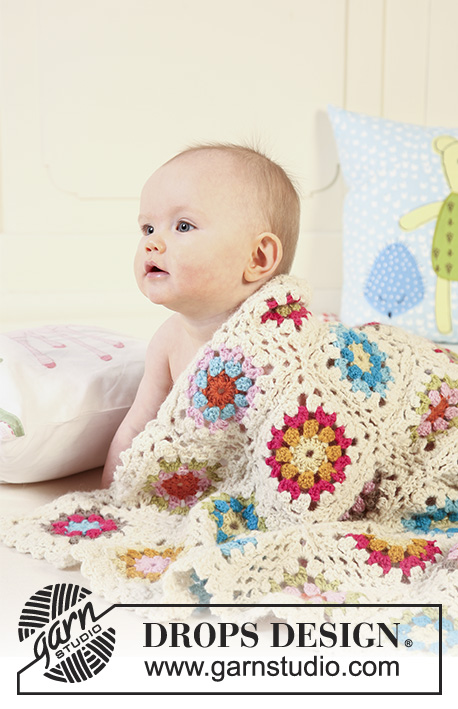









































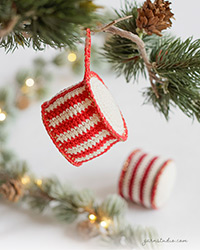





Post a comment to pattern DROPS Baby 19-10
We would love to hear what you have to say about this pattern!
If you want to leave a question, please make sure you select the correct category in the form below, to speed up the answering process. Required fields are marked *.